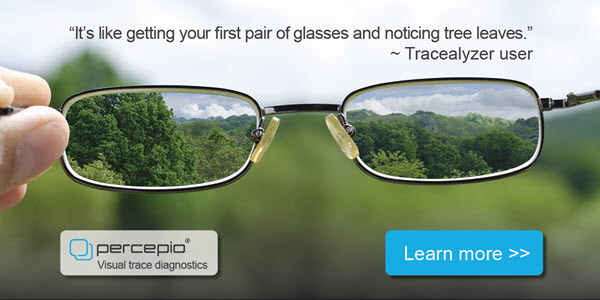|
||||
You may redistribute this newsletter for non-commercial purposes. For commercial use contact jack@ganssle.com. To subscribe or unsubscribe go here or drop Jack an email. |
||||
| Contents | ||||
| Editor's Notes | ||||
|
Tip for sending me email: My email filters are super aggressive and I no longer look at the spam mailbox. If you include the phrase "embedded muse" in the subject line your email will wend its weighty way to me. |
||||
| Tools and Tips | ||||
|
Please submit clever ideas or thoughts about tools, techniques and resources you love or hate. Here are the tool reviews submitted in the past. Here's a simple idea that in retrospect is obvious, but that never occurred to me. Suppose your MCU has an 8 bit DAC and you need a bit more resolution. Feed the output of the DAC, and a spare GPIO bit, into a summing op amp. This article has some more details. Though that piece suggests feeding the GPIO bit into the MSB, I'd be reluctant to as it's hard to know exactly the one and zero voltage from the MCU on that output. Perhaps that could work if one ran the GPIO through an op amp first to clean it up. I'd prefer to use it for the LSB. In another "around the web" article... Back when UARTs were expensive, and often physically large chips, it wasn't uncommon to create a serial interface, like for RS-232, by "bit-banging" a GPIO line. That meant writing code that toggled a parallel bit up and down to create a serial stream. The reverse was done to receive data, though the latter was a bit more finicky. In the olden days timing these signals was tedious as hardware timers were rare. One would carefully count instruction T-states to insure the serial stream went out correctly. (In the just-pre-microprocessor era I designed and built a 12 bit machine from TTL parts; a WWII-surplus Model 15 TTY was the terminal. The TTY spoke Baudot, a 5-bit code, which I drove via bit-banging code. While the code worked well, the noise and vibration from that terminal drove our neighbors crazy.) Steve Branam recently published an excellent and very complete article about creating big-banging UARTs in the modern age. Recommended. Miro Samek has a thought-provoking article about managing stacks here. He thinks most of us get this wrong. |
||||
| The Dog Ate My Homework, or Why There Were No Muses Last Month | ||||
An old excuse for not turning in one’s homework is that a canine mistook it for dinner. No one has ever believed this minor fib, but legions of kids try it as a desperate ploy. There were no Muses last month for the first time in many years. Alas, I can’t blame this on a dog. The real story is a bit less believable. In May we set off on our sailboat, planning to be gone till late July. A nice jaunt down the Chesapeake Bay and the Intracoastal Waterway in company with friends on their yawl Willow took us to Charleston, where we stayed for a few days as Willow awaited the arrival of crew members. From there we sailed to Bermuda, 800 miles due East. A rare and frustrating easterly wind meant motoring into a sometimes-heavy sea. I had anticipated about a 6-day trip, but the foul winds stretched it to eight. (At sea, we’re underway 24/7, depending on the autopilot to do the steering). On the fifth day my left eye experienced an explosion of floaters, quickly followed by a creeping blindness. A similar experience three years earlier in the other eye suggested this was a detached retina. These occur, according to my doctor’s kind but annoying euphemism, when one has had “very many birthdays”. On arrival in Bermuda an ophthalmologist confirmed the diagnosis. Alas, the required surgery is not available on the island, so the next day I was on a flight back to Baltimore. The operation went well, but recovery requires holding one’s head very still at a particular angle for, typically, weeks. Marybeth was on the boat in Bermuda, taking care of the vessel. And many family members were flying in to visit, including our kids to celebrate my 70th birthday. I had to get back. Interestingly, the surgery involves draining the eye of fluid, leaving an air bubble, which the body replaces with vitreous humor over the course of a few months. Boyles Law says pressure changes could result in permanent blindless, so I had been instructed to avoid flying till October. Scott, captain of Willow, creatively suggested trying to get a ship back. A week post-op I took a train to Boston and boarded the Norwegian Pearl, a cruise ship outbound on a 7-day sail to, well, somewhere. The first stop was Bermuda, where I slipped off. By now the kids and family were back in the States, but Marybeth and I had a nice week exploring that beautiful island. Then it was time to sail home. An unforcast force 10 storm which had us surfing downwind under bare poles did some damage and blew away my glasses (though bubble-blind in the one eye I still needed them for the other). Other problems surfaced; none I care to dwell on as this is still too raw of a story. We eventually abandoned ship. Not accepting the limitations of age was, if not a proximate cause, a contributor. My brain tells me I’m 35; the body’s ailments disagree. I activated our EPIRB (emergency beacon) and soon a ship called us on the VHF radio. The UOG Constantine G came by and, after hours of maneuvering in the heavy seas, was able to get close enough for us to climb the boarding ladder. We were both exhausted from two days without sleep or food, and the crew hauled us the final few feet over the rail. The tanker was bound for Poland. Of Liberian registry, owned by Greeks, operated by a company in Singapore, and with an Indian crew, it was loaded with 300,000 barrels of diesel fuel. The crew treated us with great compassion and offered every kind of help. We now have new friends and offers of places to stay in the Punjab. Two weeks later we arrived in Gydnia. The surgery precluded any thoughts of flying home, probably for weeks if not months. They say troubles come in 300s (don’t they?), and the last two years have kept that count high as our family has grappled with aging and mortality. I can’t fix the things I can’t fix; my philosophy is to always look for an upside. We figured being stuck in Europe is hardly a disaster, so chose to turn the predicament into a vacation. Over the course of weeks we visited many cities, eventually winding up in Southampton, England, where we boarded the Queen Mary 2. Seven days later - last Monday - we arrived in New York where Scott (of Willow) met us and very kindly drove us back home to Maryland. My laptop with Muse files was lost in the shipwreck, so the Muse went into hibernation. Both of us were devastated by the loss of Voyager, which we’d owned for 25 years. If you have a boat you know how much work we invested in her; as engineers who are always looking for better solutions to problems you can imagine how many improvements I made to her. My septuagenarian long-distance sailing friends have all bowed to the realities of aging and gone on to other passions; perhaps, after a half-century of challenging the deeps, this is my offshore swan song. So, no Muses for the last six weeks. Though I’d prefer the “dog ate my homework” excuse, that’s as accurate as a schoolchild’s lame explanations. |
||||
| More Reporting Rules | The EU's General Data Protection Regulations (GPDR) have greatly changed how many companies deal with basic
electronic security. Using a browser in Europe now and you're faced with a infinite number of demands to
permit cookies on your computer. It's frankly annoying, but non-compliance with those rules can
result in enormous fines.
Strangely, it seems few non-European companies seem concerned with these rules, at least when it comes to embedded systems. I figure this is a disaster waiting to happen; there will be a violation, and an unsuspecting company will bit hit, hard, but the EU's regulators will not be deterred. The EU is not alone. New SEC rules require reporting of cybersecurity breach for public companies. Near as I can tell, "cybersecurity breach" is left undefined and one does wonder how a large, public, company will find a mechanism for sending such reports, even for minor incidents, up the management chain into an 8K filing. I wonder how many of us have ever had the slightest influence on SEC filings? |
|||
| Bletchley Park | ||||
As part of our, uh, "adventures" this summer, we took a train from London to Bletchley Park, one of my favorite destinations in England. For this is the site of the WWII code breakers who pried secrets out of Enigma, Lorenz, and other codes. Their use of electronics, particularly in the creation of the amazing Colossus (the first real digital computer) is a tremendous story. I had heard that many new electronics exhibits were there since my last visit. Turns out, the good stuff - the electronics - is part of the National Museum of Computing, which has very limited opening hours. It was closed the day we hoped to scout it out. The rest of Bletchley Park is, of course, devoted to the site's code-breaking. To me, this was only mildly interesting, There is a great exhibit about Alan Turing, the genius who was so badly treated in later years. A small but worthwhile exhibit covers the radio tech of the war years. Old radios abound; old-timers will recognize some of these. I was surprised to learn that the British government encouraged amateurs to use their ham radios to gather intelligence about German activities. My understanding is that in the USA hams were told to mothball their gear for the duration. They also have a fully-equipped and active ham station, with all of the latest gear, operating in the latest digital modes. Unless you're deeply into the story of the Enigma, I'd suggest paying close attention to the Computing Museum's opening hours before scheduling a visit. Their web site is https://www.tnmoc.org/. |
||||
| Jobs! | ||||
Let me know if you’re hiring embedded engineers. No recruiters please, and I reserve the right to edit ads to fit the format and intent of this newsletter. Please keep it to 100 words. There is no charge for a job ad. Computer/Software Engineer: - Xiomas Technologies is seeking a highly motivated and talented individual. As an integral member of our development team, you will be responsible for assisting in the design, development, and maintenance of software applications. This is an excellent opportunity for a recent graduate or someone with limited professional experience to jumpstart their career in software engineering. We are also eager to discuss this position with more experienced engineers if you are interested! Full-Time position, flexible schedule and hybrid work options. Salary range: $75,000-$120,000. Please send resume & cover letter to careers@xiomas.com |
||||
| About The Embedded Muse | ||||
The Embedded Muse is Jack Ganssle's newsletter. Send complaints, comments, and contributions to me at jack@ganssle.com. The Embedded Muse is supported by The Ganssle Group, whose mission is to help embedded folks get better products to market faster. |





